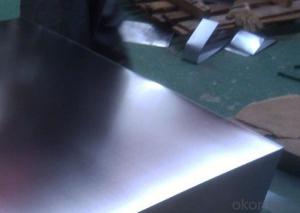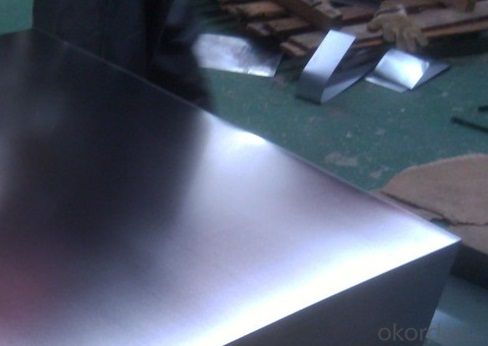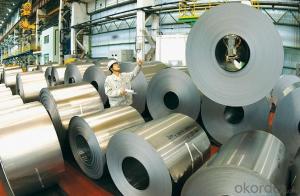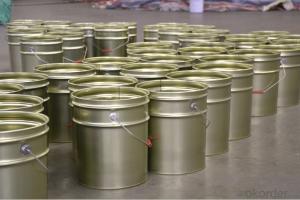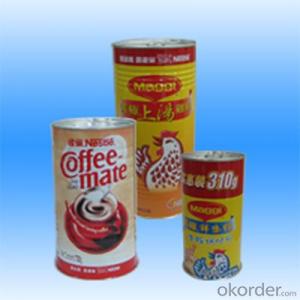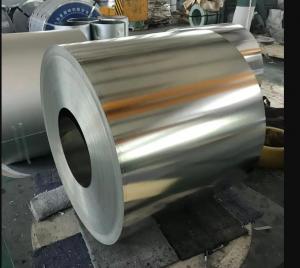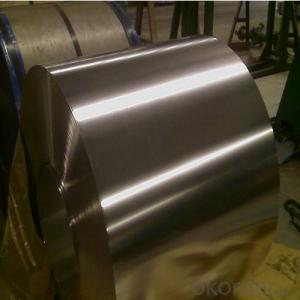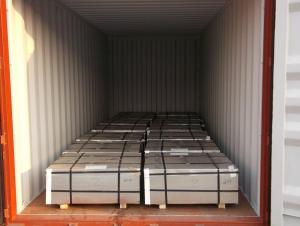JIS G3303 Electrolytic Tin Plate
- Loading Port:
- China Main Port
- Payment Terms:
- TT OR LC
- Min Order Qty:
- -
- Supply Capability:
- -
OKorder Service Pledge
Quality Product, Order Online Tracking, Timely Delivery
OKorder Financial Service
Credit Rating, Credit Services, Credit Purchasing
You Might Also Like
Quick Details
Standard:AISI, ASTM, BS, DIN, GB, JIS
Grade:MR,SPCC,SPCD,08AL,Q195L
Thickness:0.10-1.0mm
Model Number:tinplate coil/sheet
Type:Steel Plate
Technique:Hot Rolled
Surface Treatment:Silver, Matt
Application:Food cans, industrial cans and paint cans
Special Use:High-strength Steel Plate
Width:300~1000mm
Length:as per your request
surface:bright,stone,matt
- Q: What are the challenges in manufacturing tinplate?
- Some of the challenges in manufacturing tinplate include ensuring consistent coating thickness, preventing surface defects such as scratches or dents, controlling the tinplate's flatness and shape, and managing the overall production costs. Additionally, maintaining a clean and stable production environment, optimizing the manufacturing process to meet customer demands, and adhering to quality standards are also significant challenges in tinplate manufacturing.
- Q: Can tinplate packaging be used for sports equipment?
- Yes, tinplate packaging can be used for sports equipment. Tinplate is a durable and versatile material that can provide protection and longevity to various products, including sports equipment. It offers excellent resistance to corrosion and can withstand impact, making it suitable for packaging items like bats, balls, and other sports gear. Additionally, tinplate can be customized with attractive designs and branding, enhancing the overall presentation of the products.
- Q: What is the difference between tinplate and tin-free steel?
- Tinplate is a type of steel coated with a thin layer of tin, which provides corrosion resistance and enhances its appearance. On the other hand, tin-free steel refers to steel that does not have a tin coating, making it more cost-effective but also less resistant to corrosion.
- Q: What are the safety regulations for tinplate packaging?
- The safety regulations for tinplate packaging vary depending on the specific product being packaged. However, in general, tinplate packaging must meet standards set by regulatory bodies such as the Food and Drug Administration (FDA) or the European Food Safety Authority (EFSA). These regulations typically cover aspects such as the use of safe materials, proper labeling, and ensuring the packaging does not contaminate the product. Additionally, tinplate packaging must often undergo testing for factors such as durability, resistance to corrosion, and overall safety during handling and transportation.
- Q: How does tinplate contribute to the reduction of plastic waste?
- Tinplate contributes to the reduction of plastic waste by providing a sustainable alternative for packaging. Tinplate containers are durable, recyclable, and can be reused multiple times. This reduces the need for single-use plastic packaging, thereby minimizing the amount of plastic waste generated.
- Q: What are the different sizes and shapes of tinplate packaging available?
- Tinplate packaging comes in various sizes and shapes to cater to different product requirements. Some common sizes include rectangular tins, round tins, and square tins. These sizes can range from small, pocket-sized tins to larger ones suitable for bulk packaging. Additionally, tinplate packaging can also be customized to specific shapes and dimensions, allowing for unique and eye-catching designs.
- Q: What is the process for printing on tinplate?
- The process for printing on tinplate involves several steps. First, the tinplate is cleaned and coated with a thin layer of primer to ensure proper adhesion of the ink. Then, the design or artwork is engraved onto a printing plate, typically made of a flexible material like rubber or plastic. This plate is then loaded onto a printing press. The tinplate is fed into the press, and the printing plate transfers the ink onto the tinplate in the desired design. The tinplate is then dried or cured to set the ink. Finally, the printed tinplate can be further processed or converted into various products like cans or packaging materials.
- Q: How is tinplate coated for chemical storage containers?
- Tinplate is typically coated for chemical storage containers using a process called electrolytic tin plating, where a layer of tin is electrochemically deposited onto the surface of the steel substrate. This tin coating helps to protect the container from corrosion and chemical reactions, ensuring safe storage and transportation of chemicals.
- Q: How is tinplate formed into different shapes?
- Tinplate is formed into different shapes through a process called metal forming, which involves techniques like stamping, deep drawing, and folding. This is done by placing the tinplate sheet into a specialized machine that uses pressure, heat, and/or molds to shape the metal into the desired form.
- Q: What are the main challenges in the production of tinplate?
- Some of the main challenges in the production of tinplate include sourcing high-quality tin and steel materials, ensuring proper adhesion of tin coating to the steel substrate, maintaining consistent tin coating thickness, preventing surface defects such as tin whiskers or blisters, and meeting environmental regulations related to waste disposal and emissions.
Send your message to us
JIS G3303 Electrolytic Tin Plate
- Loading Port:
- China Main Port
- Payment Terms:
- TT OR LC
- Min Order Qty:
- -
- Supply Capability:
- -
OKorder Service Pledge
Quality Product, Order Online Tracking, Timely Delivery
OKorder Financial Service
Credit Rating, Credit Services, Credit Purchasing
Similar products
Hot products
Hot Searches
Related keywords
